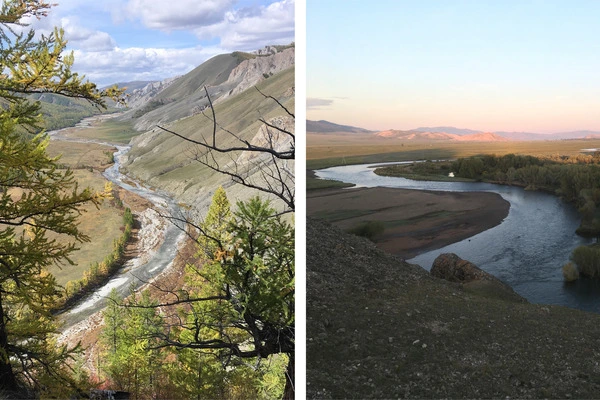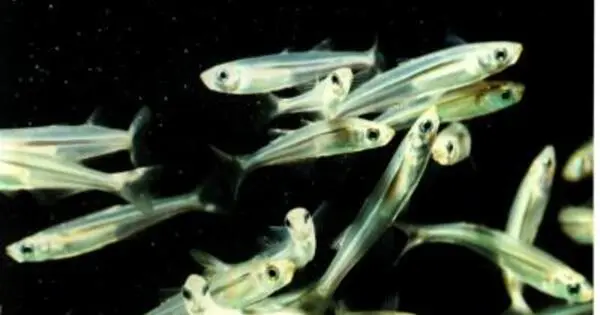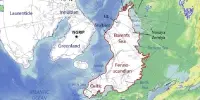River erosion can, in fact, influence fish evolution. River systems are ever-changing environments with regards to water flow, sediment transport, and habitat structure. These processes can have a big impact on fish populations and their evolutionary paths.
New discoveries may help to explain biodiversity hotspots in tectonically quiet areas. We would see biodiversity clustering around tectonic turmoil if we could rewind the tape of species evolution around the world and play it forward hundreds of millions of years to the present day. Because of the shifting landscapes that act to divide and diversify species over time, tectonically active regions such as the Himalayan and Andean mountains are especially rich in flora and fauna.
However, biodiversity can thrive in geologically quieter regions where tectonics hasn’t shaken the land for millennia. One prime example is the Appalachian Mountains: Despite the fact that the range has not seen much tectonic activity in hundreds of millions of years, it is a significant hotspot of freshwater biodiversity.
An MIT study has identified a geological process that may shape species diversity in tectonically inactive regions. The researchers report in Science that river erosion can be a driver of biodiversity in these older, quieter environments.
Give this process of erosion more time, and I think these separate lineages will become different species. The greenfin darter may not be the only species to diversify as a consequence of river erosion.
Maya Stokes
They make their case in the southern Appalachians, specifically the Tennessee River Basin, a region known for its diverse freshwater fish population. The researchers discovered that as rivers eroded through different rock types in the region, a species of fish known as the greenfin darter was pushed into different tributaries of the river network. These separated populations evolved into their own distinct lineages over time.
The team believes that erosion caused the greenfin darter to diversify. Although the separated populations appear to be similar on the surface, with the greenfin darter’s distinctive green-tinged fins, their genetic makeup differs significantly. For the time being, the separated populations are classified as a single species.
“Give this process of erosion more time, and I think these separate lineages will become different species,” says Maya Stokes PhD ’21, who carried out part of the work as a graduate student in MIT’s Department of Earth, Atmospheric, and Planetary Sciences (EAPS).
The greenfin darter may not be the only species to diversify as a consequence of river erosion. The researchers suspect that erosion may have driven many other species to diversify throughout the basin, and possibly other tectonically inactive regions around the world.
“If we can understand the geologic factors that contribute to biodiversity, we can do a better job of conserving it,” says Taylor Perron, the Cecil and Ida Green Professor of Earth, Atmospheric, and Planetary Sciences at MIT.

Fish in trees
Stokes’ PhD work at MIT, where she and Perron were exploring connections between geomorphology (the study of how landscapes evolve) and biology, inspired the new study. They came across the work of Thomas Near at Yale, who studies the lineages of North American freshwater fishes. Near uses DNA sequence data collected from freshwater fishes across North America to show how and when different species evolved and diverged from one another.
Near brought a curious observation to the team: a greenfin darter habitat distribution map showing that the fish was found in the Tennessee River Basin, but only in the southern half. Furthermore, Near had mitochondrial DNA sequence data indicating that the genetic makeup of the fish populations appeared to differ depending on the tributary in which they were found.
Stokes gathered greenfin darter tissue samples from Near’s extensive collection at Yale, as well as from the field with help from TVA colleagues, to investigate the reasons for this pattern. She then compared the genes of each individual fish to every other fish in the dataset by analyzing DNA sequences from across the entire genome. The team then created a phylogenetic tree of the greenfin darter, based on the genetic similarity between fish.
From this tree, they observed that fish within a tributary were more related to each other than to fish in other tributaries. What’s more, fish within neighboring tributaries were more similar to each other than fish from more distant tributaries.
“Our question was, could there have been a geological mechanism that, over time, took this single species, and splintered it into different, genetically distinct groups?” Perron says.
A changing landscape
Stokes and Perron started to observe a “tight correlation” between greenfin darter habitats and the type of rock where they are found. In particular, much of the southern half of the Tennessee River Basin, where the species abounds, is made of metamorphic rock, whereas the northern half consists of sedimentary rock, where the fish are not found.
They also discovered that rivers running through metamorphic rock are steeper and narrower, resulting in more turbulence, which greenfin darters appear to prefer. Could the distribution of greenfin darter habitat have been shaped by a changing landscape of rock type as rivers eroded into the land over time, the team wondered?
To test this hypothesis, the researchers created a model that simulates how a landscape evolves as rivers erode through different rock types. They fed the model information about the current rock types in the Tennessee River Basin, then ran the simulation to see how the same region might have looked millions of years ago, when more metamorphic rock was exposed.
















